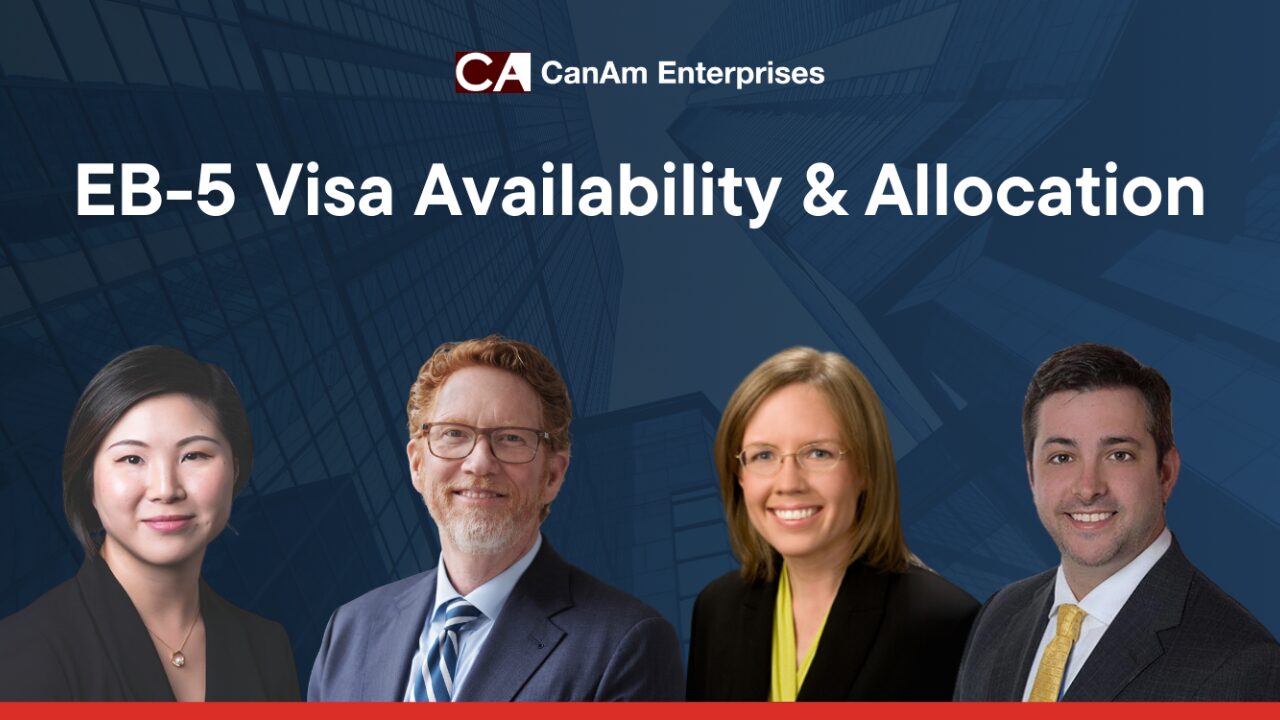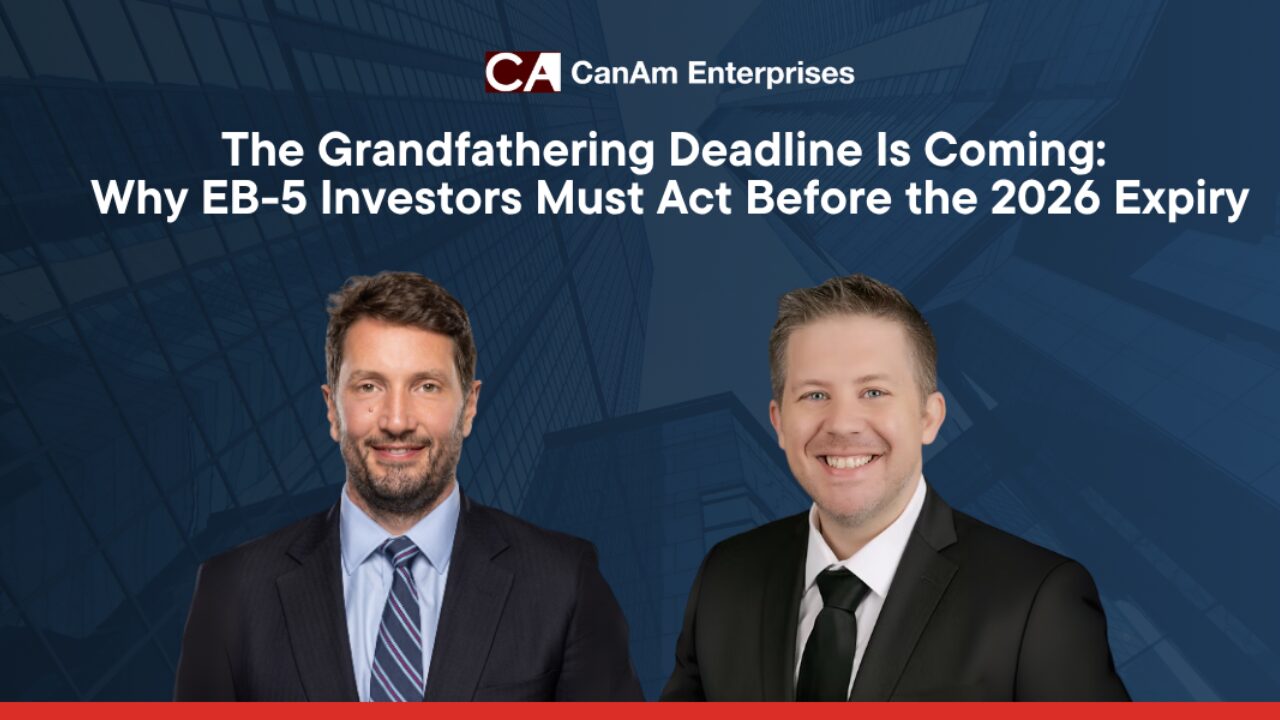The EB-5 Immigrant Investor Program has long offered a pathway for foreign nationals to obtain permanent U.S. residency through investment. However, one of the most transformative policy shifts in recent years—Concurrent Adjustment of Status (CAS)—has significantly changed the timeline and benefits for EB-5 investors already residing in the United States.
For eligible applicants, the ability to file a concurrent adjustment of status (I-485) while their EB-5 petition is pending has become a pivotal tool for streamlining their transition from a temporary visa holder to a green card holder. This process has unlocked new opportunities and immediate benefits—especially for students on F-1 visas, professionals on H-1B visas, and others on temporary non-immigrant statuses.
In this article, we explore how EB-5 Concurrent Adjustment of Status works, who is eligible, and why it’s considered a game-changer for many investors and their families.
What Is EB-5 Concurrent Adjustment of Status?
Concurrent Adjustment of Status (CAS) refers to the ability to file Form I-485 (Application to Adjust Status) at the same time as Form I-526E (Immigrant Petition by Regional Center Investor)—the initial petition for the EB-5 immigrant visa.
Before the passage of the EB-5 Reform and Integrity Act of 2022 (RIA), EB-5 applicants had to wait for their I-526 petition to be approved before initiating the I-485 process. This meant enduring years of uncertainty without access to work or travel benefits unless they maintained another valid visa status.
Now, EB-5 investors who are already in the U.S. on another qualifying visa can file both forms concurrently—assuming a visa number is immediately available in their EB-5 category.
Who Is Eligible for CAS Under EB-5?
To qualify for concurrent adjustment of status EB-5 filing, you must meet the following conditions:
- You are physically present in the United States on a valid nonimmigrant visa (such as F-1, H-1B, L-1, E-2, etc.).
- You are filing Form I-526E under a category that is current on the Visa Bulletin (e.g., rural or high-unemployment set-aside categories).
- You are eligible to adjust status in the U.S. under immigration law (i.e., you entered the U.S. legally and have maintained lawful status).
This pathway is particularly appealing for:
- F-1 to EB-5 adjustment applicants seeking long-term U.S. residency after graduation.
- H-1B to EB-5 pathway candidates looking for a more permanent alternative to employer-sponsored green cards.
Why CAS Is a Game Changer for EB-5 Investors
The ability to file a concurrent I-485 EB-5 filing comes with several immediate benefits that make the EB-5 visa category significantly more attractive.
-
Work Authorization While Petition Is Pending
Applicants who submit Form I-485 can also file Form I-765, which allows them to receive an Employment Authorization Document (EAD). This is particularly valuable for F-1 students and H-1B professionals who may be nearing the end of their visa terms or who want greater job flexibility.
With work authorization pending EB-5, investors and their dependents can legally work in the U.S. while waiting for their green card.
-
Advance Parole for International Travel
Along with I-765, applicants can file Form I-131, which grants Advance Parole—a permit to leave and re-enter the U.S. while their adjustment application is pending. This travel benefit reduces the risk of being stuck abroad during long processing times.
Many EB-5 investors now utilize travel parole EB-5 CAS to maintain personal and business commitments overseas without jeopardizing their green card process.
-
Freedom from Visa Renewal Stress
Once a concurrent adjustment is filed, the investor and dependents can remain in the U.S. in “authorized stay” status, even if their original nonimmigrant visa expires. This allows EB-5 investors to transition off temporary visas without the uncertainty and delays associated with renewals or changes of status.
Learn more about Lawful Status, Authorized Stay and Unlawful Presence
Real-World Example: From F-1 to EB-5
Consider an international student completing a graduate program in the U.S. on an F-1 visa. Rather than relying on OPT or entering the competitive H-1B lottery, they opt for the F-1 to EB-5 adjustment route. By investing in a qualified EB-5 regional center project in a rural area (which has visa set-asides and priority processing), they can file the I-526E and I-485 together.
Within months, the student can obtain work authorization and travel permission—without having to leave the country. For many students and families, this offers a smoother, more stable path to permanent residency.
Frequently Asked Questions (FAQs)
How long does the I-485 EB-5 filing take to be approved?
Processing times vary based on USCIS workload and visa availability, but having concurrent adjustment of status EB-5 in place ensures applicants are in legal status and eligible for benefits while waiting.
Can I travel internationally once I file I-485?
Yes—but only after Advance Parole is approved. Leaving the U.S. without it could be considered abandonment of the I-485 application.
What happens if my I-526E is denied?
If your I-526E is denied, your I-485 will also be denied. However, until a decision is made, you remain in the U.S. in authorized stay and can work and travel if you’ve received EAD and Advance Parole.
Important Considerations for CAS Filers
While CAS offers clear benefits, EB-5 investors should consider the following before filing:
- Legal Compliance: Your current visa status must be valid and properly maintained at the time of filing. Any violations could jeopardize your ability to adjust status.
- Public Charge Requirements: Applicants must demonstrate that they will not become a public charge, as required by USCIS.
- Dependent Filing: Spouses and unmarried children under 21 can also file their own I-485 applications concurrently and receive EAD and travel benefits.
Working with an experienced immigration attorney is essential to avoid pitfalls and maximize the advantages of the EB-5 CAS route.
Conclusion: The Time to Act Is Now
For those already in the United States on a valid visa, EB-5 Concurrent Adjustment of Status represents a rare opportunity to secure work authorization, travel benefits, and a direct path to a green card—all without needing to leave the country.
As demand grows and visa set-asides begin to fill, the window for concurrent filing may narrow. Filing under a rural or high-unemployment project with visa availability is currently the best way to unlock CAS benefits.
Whether you’re a student seeking a permanent foothold in the U.S. or a professional tired of visa uncertainty, adjusting status through EB-5 can be a life-changing solution.
Interested in learning more? Contact CanAm Enterprises to explore our current EB-5 investment opportunities that qualify for concurrent adjustment of status. Our experienced team is here to guide you every step of the way.
Disclaimer: This blog is for informational purposes only and does not constitute legal advice. Please consult an immigration attorney to assess your specific eligibility for EB-5 concurrent adjustment of status.





